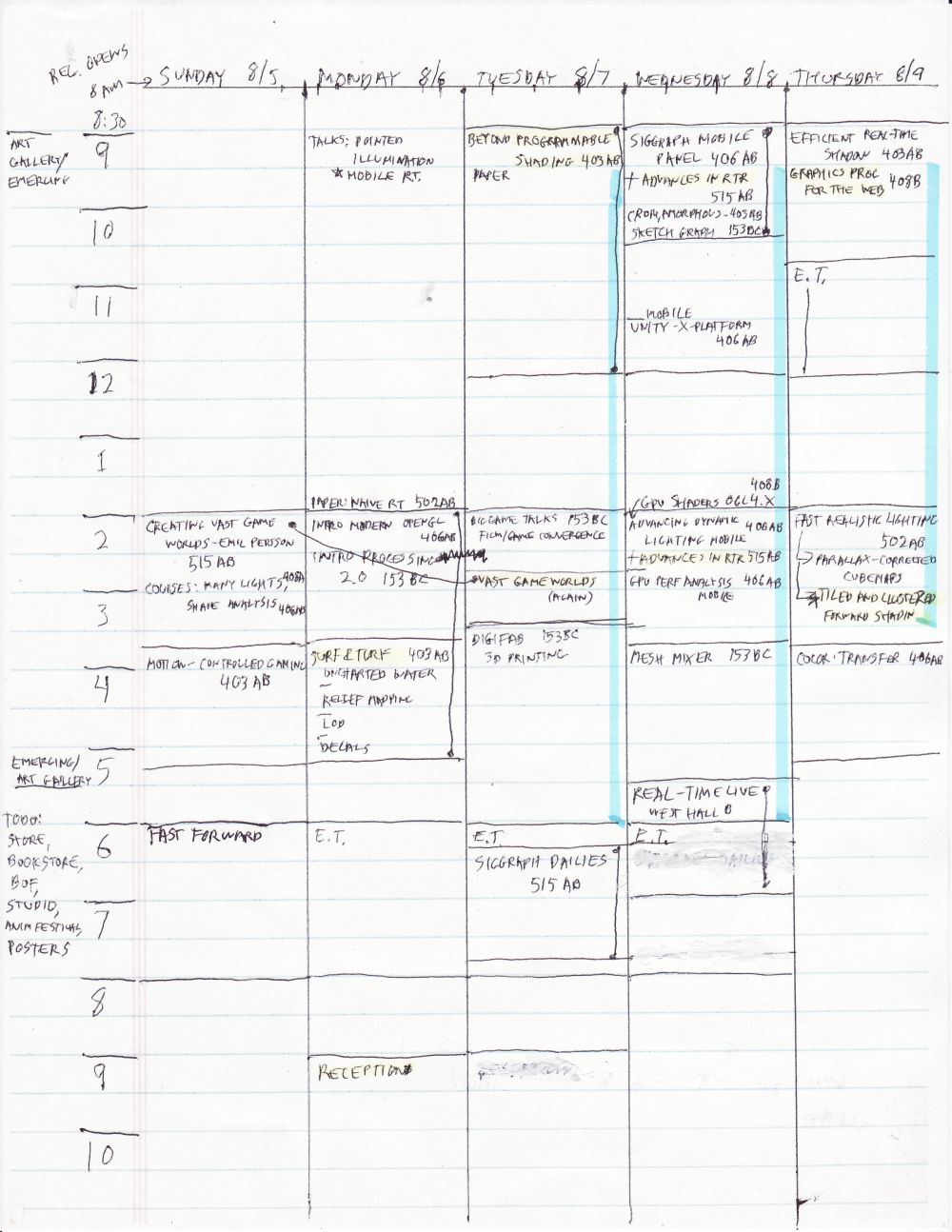In my previous blog post I mentioned the newly-released book OpenGL Insights. It’s worth a second mention, for a few reasons:
- The editors and some contributors will be signing their book at SIGGRAPH at the CRC booth (#929) at Tuesday, 2 pm. This is a great chance to meet a bunch of OpenGL experts and chat.
- Five free chapters, which can be found here. In particular, “Performance Tuning for Tile-Based Architectures” is of use to anyone doing 3D on mobile devices. Most of these devices are tile-based, so have a number of significant differences from normal PC GPUs. Reading this chapter and the (previously-mentioned) slideset Bringing AAA Graphics to Mobile Platforms (PDF version) should give you a good sense of the pitfalls and opportunities of mobile tile-based architectures.
- The book’s website has an OpenGL pipeline map page (direct link to PDF here). Knowing what happens when can clarify some mysteries and solve some bugs.
- The website also has a tips page, pointing out some of the subtleties of the API and the shading language.
While I’m at it, here are some other worthwhile OpenGL resource links I’ve been collecting:
- ApiTrace: a simple set of wrapper DLLs that capture graphics API calls (also works for DirectX). You can replay and examine just about everything – think “PIX for OpenGL”, only better. For example, you can edit a shader in a captured run and immediately see the effect. Also, it’s open-source and as of this writing is actively being developed.
- ANGLE: software to translate OpenGL ES 2.0 calls to DirectX 9 calls. This package is what both Chrome and Firefox use to run WebGL programs on Windows. Open source, of course. Actually, just assume everything here is open-source unless I say different (which I won’t).
- Edit: Patrick Cozzi (one of the editors of OpenGL Insights) notes that there are several options for WebGL on IE. “Currently, I think the best option is to use Chrome Frame. It painlessly installs without admin rights, and also brings Chrome’s fast JavaScript engine to IE. We use it on http://cesium.agi.com and I actually demo it on IE (including installing Chrome Frame) by request quite frequently.”
- Microsoft Internet Explorer won’t support WebGL, so someone else did as a plug-in.
- Equalizer: a framework for coarse-parallel OpenGL rendering (think multi-display and multi-machine).
- Oolong and dEngine: OpenGL ES rendering engines for the iPhone and iPad. Good for learning how things work. Oolong is 90% C++, dEngine is pure C. Each has its own features, e.g. dEngine supports bump mapping and shadow mapping.
- A bit dated (OpenGL ES 1.1), but might be of interest: a readable rundown of the ancient Wolf3D engine and how it was ported to the iPhone.
- gl2mark: benchmarking software for OpenGL ES 2.0
- Matrix libraries: GLM is a full-blown matrix library based on OpenGL naming conventions, libmatrix is a template library for vector and matrix transformations for OpenGL, VMSL is a tiny library for providing modern OpenGL with the modelview/projection matrix functionality in OpenGL 1.0.
- G3D: well, it’s more a user of OpenGL, but worth a mention. It’s a pretty nice C++ rendering engine that includes deferred shading, as well as ray tracing. I use it a lot for OBJ file display.
- OpenGL works with cairo, a 2D vector-based drawing engine. Funky.

